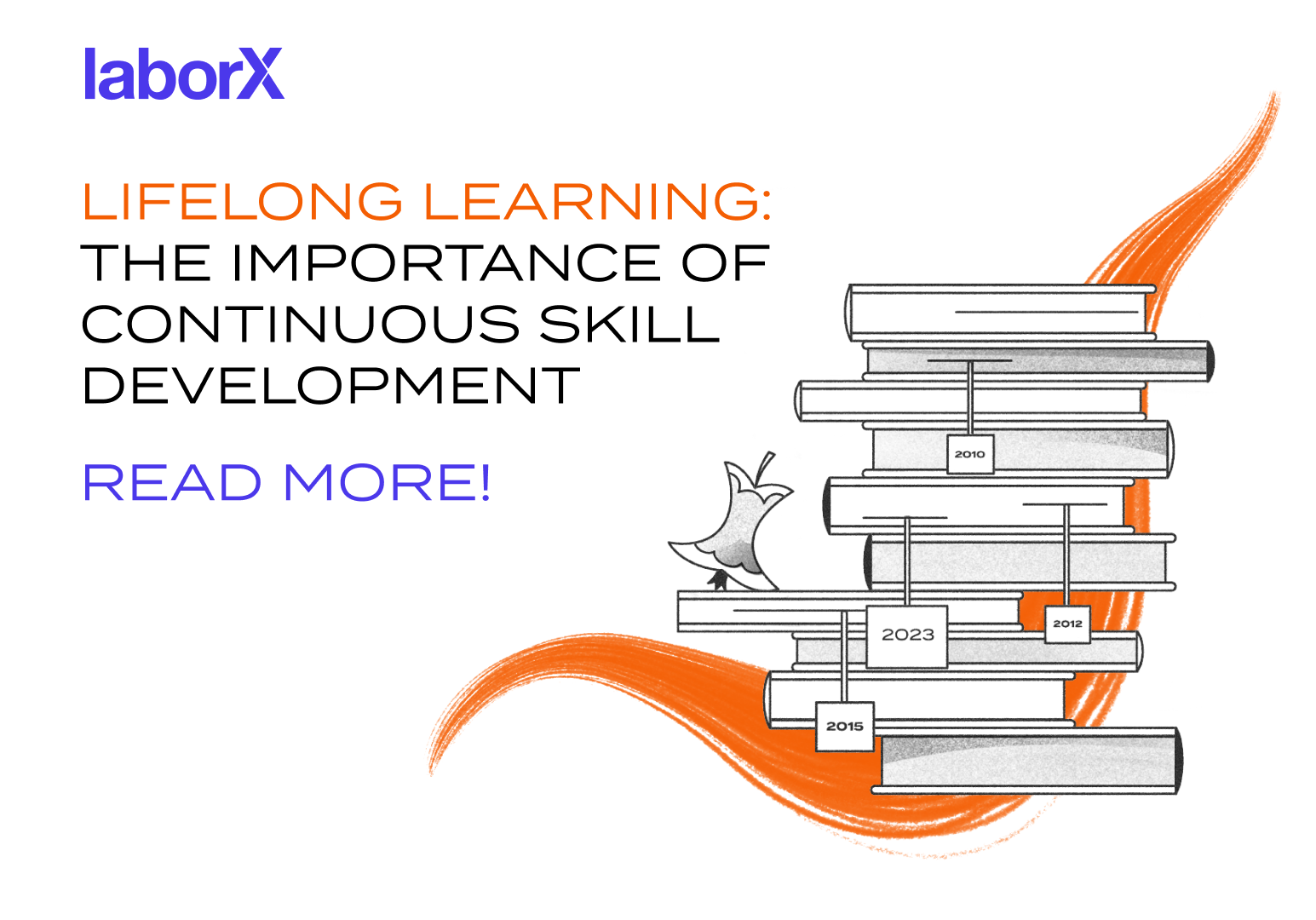
Embracing Change: HR in the World of Digital Assets
Hotcoin’s HR shares her journey from traditional industries to the world of Web3 and crypto, highlighting key insights on thriving in this space.
Read
Who said you can't teach an old dog new tricks?
Once upon a time, you would go to school, maybe attend university, and assuming you managed fairly good marks (and possibly knew the right people), you could secure a decent job. So long as you didn’t do anything too outrageously wrong, you were set for life. You would work 9-to-5, five days a week, for 40 to 45 years, at which point you would retire.
Those days are, thank goodness, long gone.
Today’s work environment is far more competitive and less secure, but it does have the advantage of being more interesting and ensuring that employees don’t sleepwalk their way through life. Those who stand still, as the saying goes, are apt to be left behind. And that’s just in the regular workplace.
If you work in Web3, there’s even less room for complacency. It’s a fast-moving and highly-rewarding sector, but the crypto world is unforgiving and doesn’t tolerate freeloaders. You might be at the top of your game, but if you don’t stay up-to-date, you won’t stay there. The technology moves on, trends shift, markets evolve, user needs change. Imagine trying to compete in 2023’s Web3 world using only knowledge gained in 2018, or even 2021 – it’s unthinkable.
The good news is that while the workplace has changed out of all recognition, so have all the ways of expanding your skill set and enhancing your prospects of landing – and keeping – the best jobs. Just as the office is now remote and online, so is education. Just about anything you could possibly want to learn is available on the web, often in the form of free courses and certifications. You can access these in your own time, from the comfort of your own home (or local cafe, or the beach…)
All that remains is to pinpoint which areas you want to study – or, better still, which of the most sought-after skills in the Web3 space appeal to you, and that you think you could add to your toolkit.
Before you get started, figure out how much time you have for acquiring new skills, and when in the day you might find that time.
This will come down to a few different factors. If you’re already employed full-time, you necessarily won’t have as many hours in the day to learn about a new area. If you freelance, you should be able to earmark some time every day or week. If you’re unemployed, then you may have more flexibility, but equally a lot of your time will be spent looking for a new job. It’s also harder to learn when you’re under pressure. This is why it’s a good idea to plan ahead. Learning from a place of security is ideal, because you have the luxury of preparing for a new role well in advance.
Another factor is your personality and preferred learning style. Some people are naturally good at carving out regular time every day, or using spare slots of time to dip into new courses and topics. Others need a block of time to focus properly.
Finally, the subject itself, and the way you choose to engage with it, will make a difference to how you go about learning. Some courses are delivered in bite-size sections, each of which takes only a few minutes to consume. (That’s often true of beginner courses, where the material is presented in as accessible a way as possible.) Others require that you watch a longer video or explainer, or else include tasks that you may want to complete in one go to ensure you understand them and maintain continuity.

The next step is to find a skill you think is worth adding to your arsenal. This means finding the overlap between:
For example, if your background is in marketing and you’ve never written a line of code in your life, learning Solidity with a view to becoming a dApp developer probably isn’t the first topic that will appeal to you (though if you think you might enjoy it, give it a go – there are plenty of ways you can dip a toe in the water and find out whether you have any aptitude for it, without wasting too much time if it turns out not to be your thing). You might, instead, want to look into new areas of digital marketing and strategies that are popular and effective in the Web3 space.
On the other hand, if you’re already proficient in one or more programming languages, and have a good understanding of blockchain technology, you should find it easy enough to pick up the skills you need to find work as a smart contract developer.
As a starting point, look for trends across the crypto space to help you pinpoint in-demand skills. You can do that in different ways. Check out different Discords and community platforms, and ask what people in the space are seeing (and what project teams are looking for). Keep up with crypto news, especially outlets that take a broader view and publish updates on tech that might become relevant to the blockchain space. Use TikTok as a search engine, since it can often deliver better and more relevant results than Google. (As one marketing agency website notes, ‘Data from a US commissioned study showed that nearly 40% of 18-24 year-olds, or Gen-Z, prefer to make web searches via Instagram or TikTok instead of Google.’ It’s not limited to Gen-Z either, with the platform becoming more and more popular among older users too.)
You’ll also find some good threads on Twitter, detailing some of the most in-demand areas and the courses that are available – often for free. For example, large tech corporations like Google and Microsoft offer free certificates for courses including AI, IoT, machine learning, data science, Python and more. Data science especially is an area that is always in demand, and there are some great (and free) courses to get you started on the path to a new career.

Web3 has enthusiastically adopted new disciplines and technologies to help make it a success. In an open, online environment, any tool that helps get the job done faster, more cheaply, or more effectively is integrated – and this applies to education as well as to dApps and protocols.
One of the most powerful tools you’ll find to accelerate your learning is gamification: the incorporation of elements typically found in video games (such as point scoring, badges, leaderboards, competition, and rewards of various kinds) to other arenas. Gamification is now a popular element in many Web3 courses.
For example, one of the best resources you can use to explore the deep waters of Solidity programming is a course called CryptoZombies. This was the first tutorial on the internet for building NFTs, and takes the form of an entertaining series of lessons that not only teach you how to build a simple game using smart contracts, but are actually gamified in their own right. It’s a well-known and loved website has taught over 400,000 budding developers some of the basic principles of Ethereum and Solidity coding, via a browser-based series of six lessons (in the Beginners course) that take you step-by-step through the key ideas you’ll need to know and hold your hand as you build a simple dApp, checking the code you write line-by-line.
One of the great things about the approach CryptoZombies takes is that it’s broken into small, manageable chunks (the first lesson has 15 steps), and as a whole takes just half an hour to an hour to complete, depending on your prior level of coding experience. Some familiarity with another programming language is best, but it’s not 100% necessary. This means you can dip into it for a few minutes here and there, if you don’t have a chunk of time to study it from start to finish. The first lesson in particular is very unthreatening, and by the end you’ll already have picked up some of the most important principles of Solidity, such as declaring data types (used to store number, string and various other information on the blockchain), creating functions (which use that data and other inputs to do just about anything you might want) and communicating changes that take place on the blockchain to a regular website your users will need to interact with the dApp.
CryptoZombies is a great place to start in your Solidity journey, but if you decide this gamified approach isn’t for you, then there are many more courses of all kinds that will introduce you to the basics and more. You can search popular sites like Coursera, Udemy and others, check out YouTube for tutorials, and approach devs directly through project Discords (one of the best ways to learn is by doing, and many devs will be happy to help train up someone by giving them a task they need completed).
And then there’s the new superpower in town: AI.
It should now be clear to everyone that artificial intelligence is going to be one of the most important tools of the new economy – if not the defining technology of this generation. AI enables incredible new use cases and benefits, from dramatically greater efficiency via automation to analysing huge sets of data to gain insights that would be impossible to learn via conventional means.
Plenty of people are concerned that AI will make their jobs obsolete in the near future and put them out of work, but those warnings are over-exaggerated. There may be some disruption (new technologies always bring change) but you’re far better off learning about AI than fearing it. Google has gone hard on AI, and as well as providing many different apps, offers a load of useful courses on various types and aspects of Generative AI.
Moreover, AI – particular Generative AI – can be used as a powerful learning tool. In all kinds of areas, it can be extremely helpful to see examples of what you need. For example, when writing code, it’s far easier to understand the principles you’re learning when you have a piece of working code in front of you. AI can give you that on demand.
For example, try asking ChatGPT to write a simple function in Solidity. Or if you’re learning a language, ask for an expression or a translation. If you need a bunch of ideas for blog posts, or even sample text for one of those posts, AI is a brilliant way to generate that.
What you are emphatically not doing here is getting ChatGPT to do all the work for you. That’s not how using AI as a productivity tool works. (If you try it, then in practice you’ll end up with code that doesn’t work in the context of your dApp, if at all; blog posts that are cookie-cutter and instantly recognisable as AI-generated; avoidable mistakes, and all kinds of other issues.) The idea is to give you a starting point that gives you a clear understanding of your material that you can then work with, edit, rewrite, develop, and so on. This short-circuits a whole lot of web searching and time spent digesting content, taking the leg work out of learning and getting up to speed on something new.
For this reason, if for no other, AI is a technology you should embrace and explore. If you don’t, know that others will be – potentially out-competing you by generating higher-quality output more quickly than they would otherwise be able to, and learning about new ideas and subjects in the process.
What are your tips for learning about a new subject and up-skilling fast? Let us know by dropping us a line on one of our social media channels.

Hotcoin’s HR shares her journey from traditional industries to the world of Web3 and crypto, highlighting key insights on thriving in this space.
Read
Discover how Web3 is reshaping HR practices with insights from a leading expert in the field.
Read
Discover Base's innovative L2 solution addressing scalability, security, and user experience challenges in crypto. Learn about Base Incubator by LaborX, fostering growth and innovation within the Base ecosystem.
Read